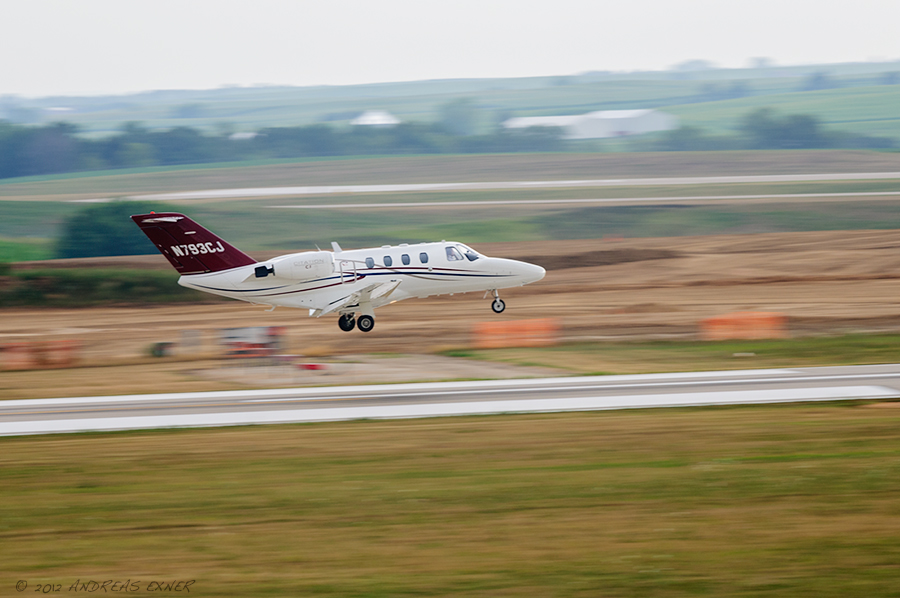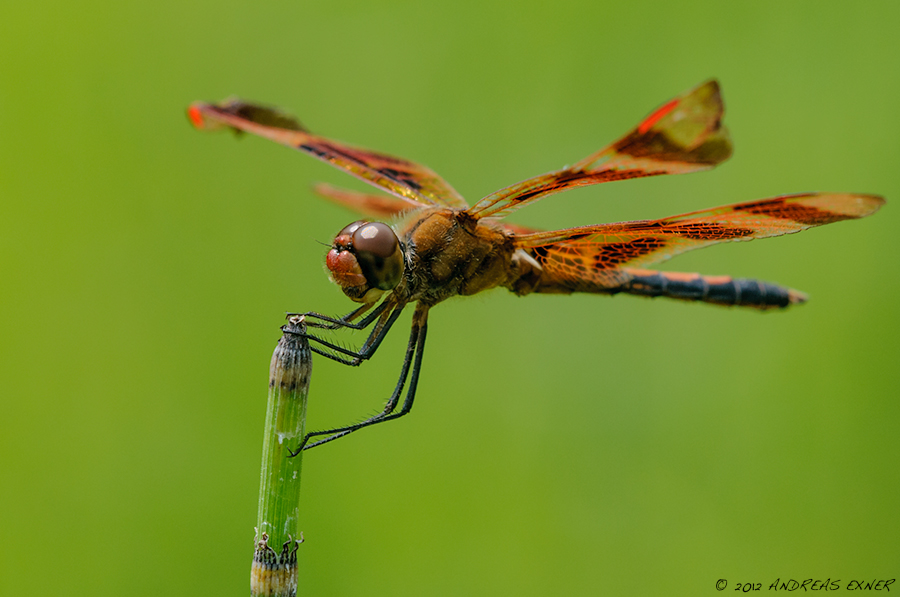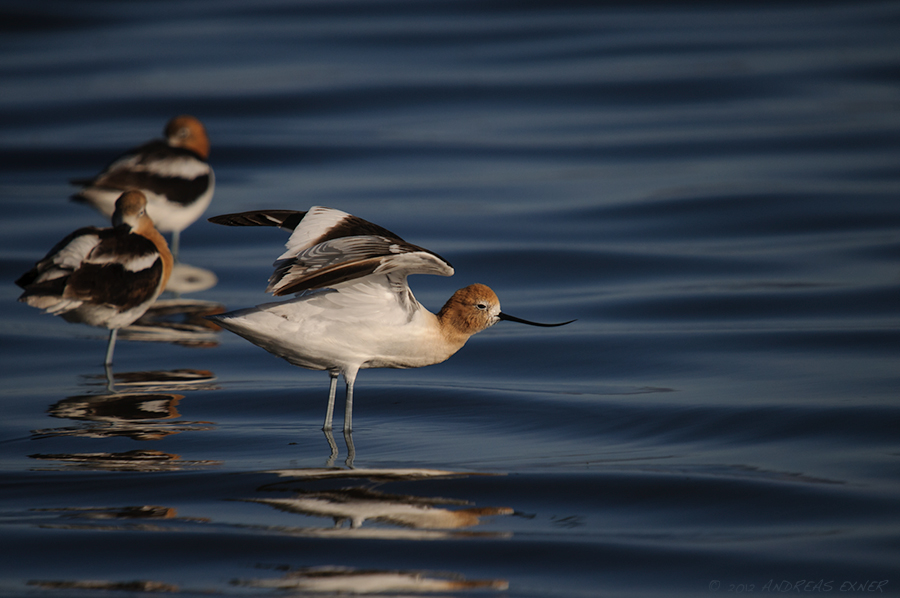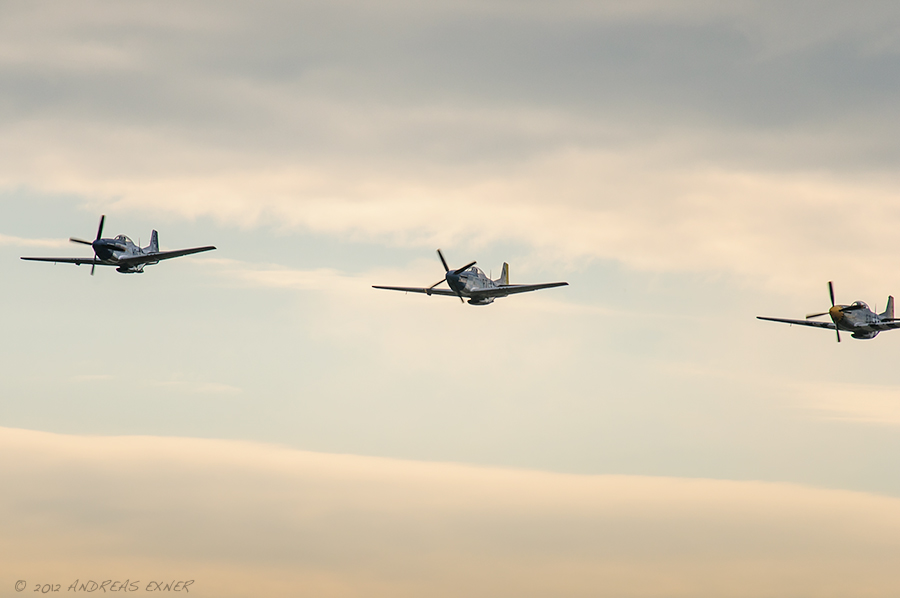
Today's blog post of my photographer friend Dave Updegraff reminded me that the air show in Oshkosh next week is just right around the corner. That means for us here in the area around Dubuque we may have a chance to watch some of the airplanes at the Dubuque, Iowa airport. They use this airport as a base for their practice before the big event.
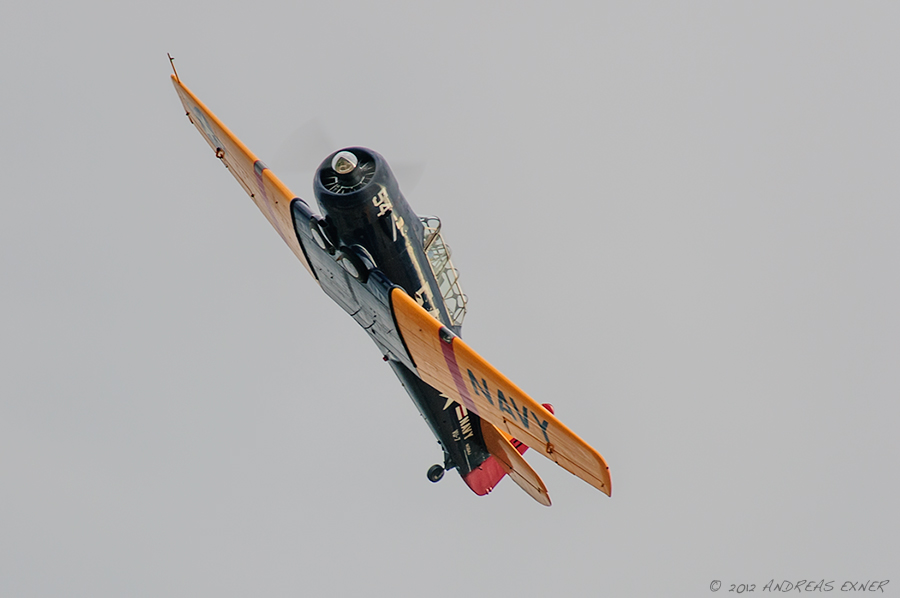
Murphy's law was applied again this afternoon. During my first hour in the late afternoon it was very busy, with lots of take offs and landings, but the light was very dull. Later the clouds thinned out and we got some great light but there wasn't as much action anymore.
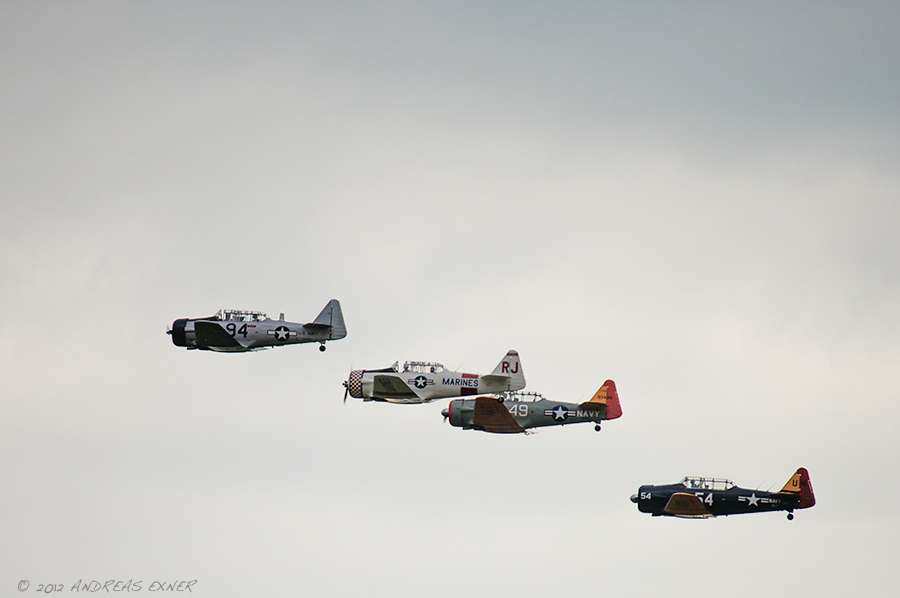
I can tell my panning skills need some refinement because I didn't have much practice recently. I trashed much more images than usual because they were out of focus (It would be great if the air show would be right after the Bald Eagle season in the winter..., just kidding... ;-) ).
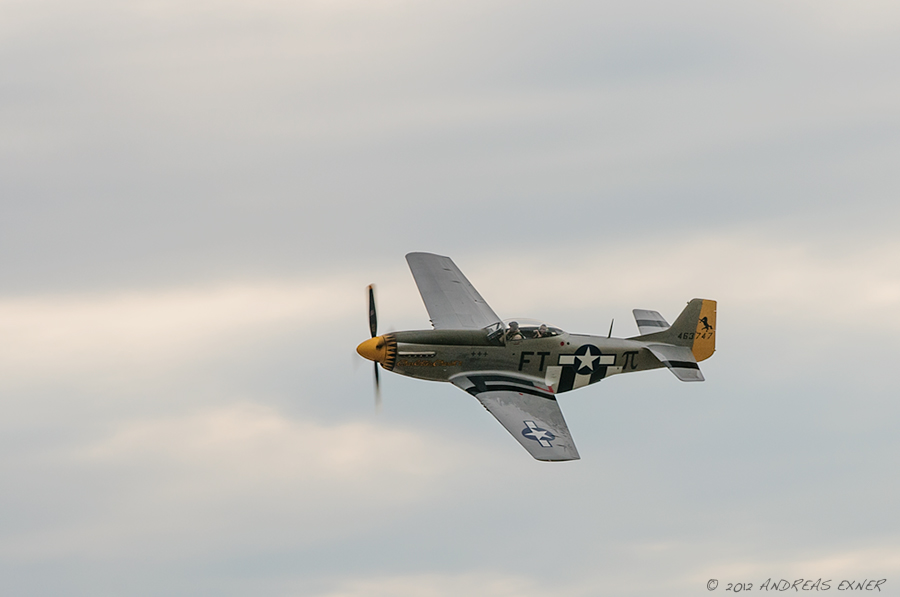
All of my pictures from today have a big flaw. The props look like they would stand still. This is due to the fact that I was simply not able to handhold the camera at 1/60s while panning, which is necessary to show the motion of the prop. I tried hard but lack of practice can't be made up within two hours. The good thing is that today's practice may help my wildlife photography in the near future. That's one of the reasons I gave it a try today...

